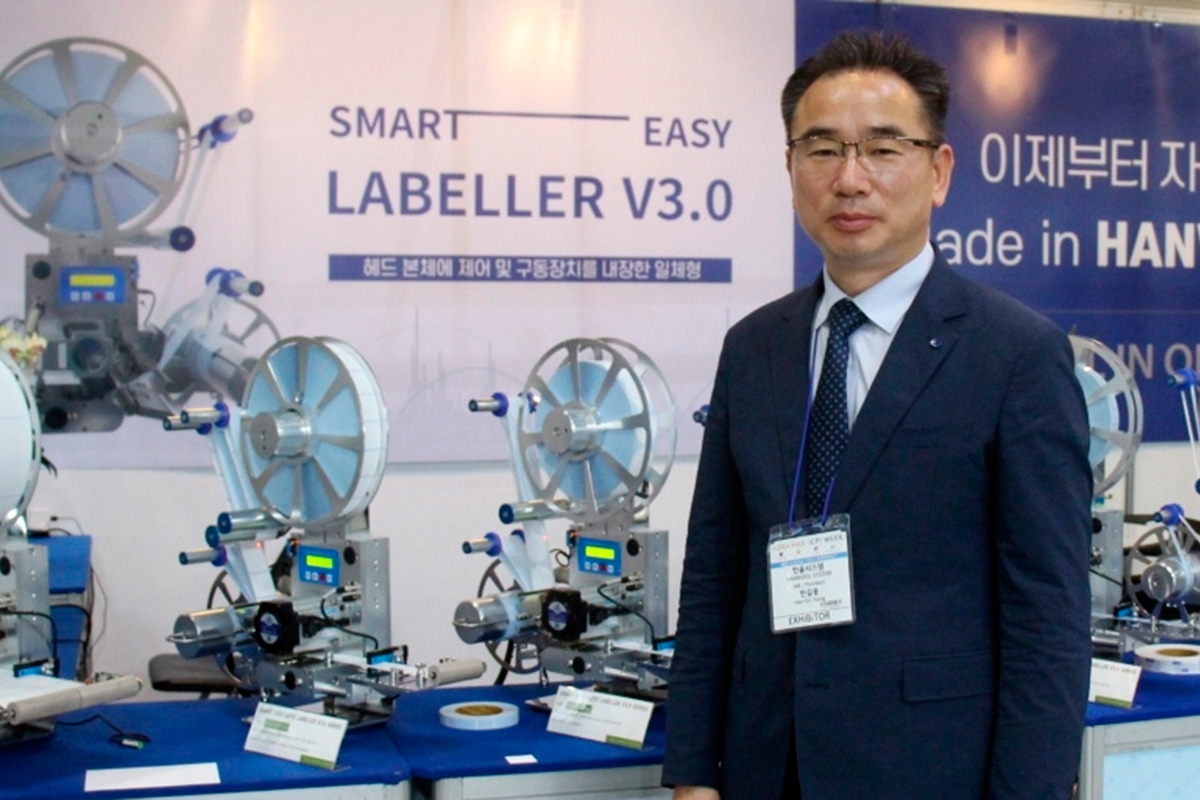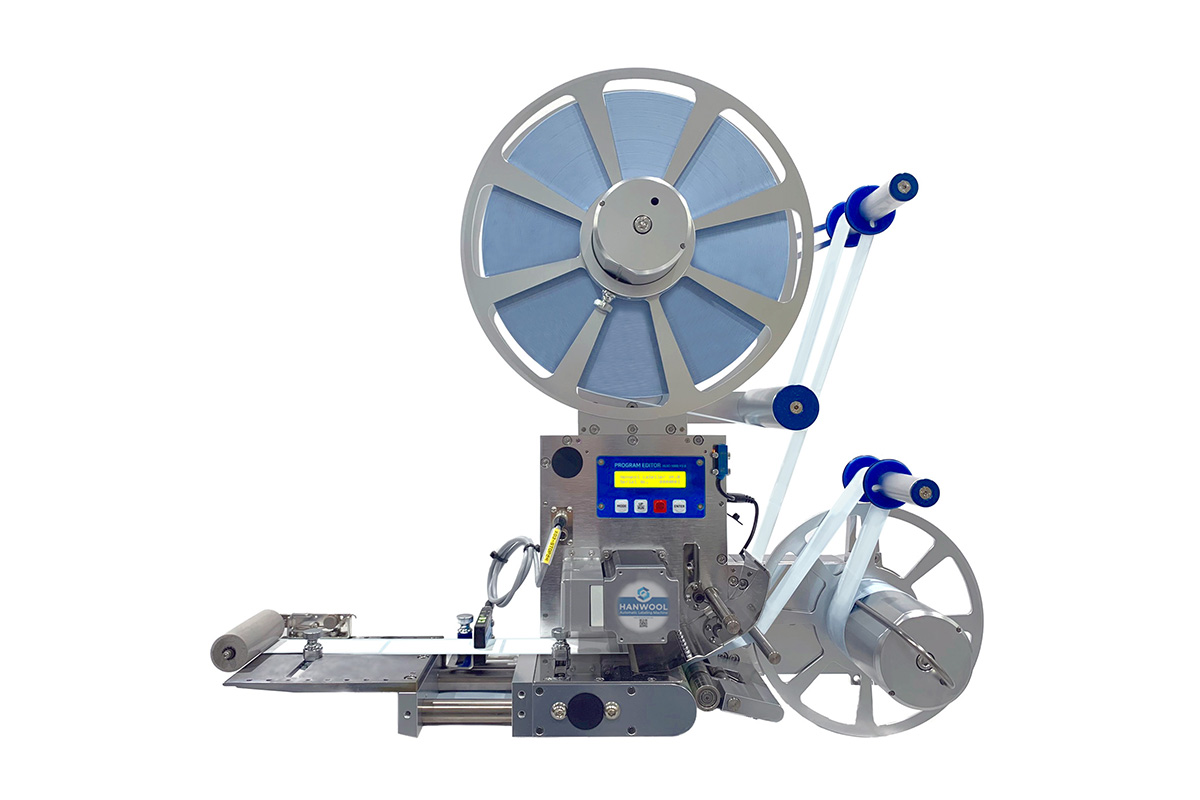Hanwool, a pioneering Korean company specializing in automation systems, is looking for partnerships to expand globally.

Over the last few years, the South Korean industry has lived through a series of supply-chain disruptions, including shortages caused by the COVID-19 pandemic and Japan’s unfamous restrictions on export of semiconductor materials in 2019. As a result, the Korean government and industry made the creation of an independent and resilient supply chain a national priority. From a macroscopic perspective, what is your assessment of the strengths of the South Korean industry? And of the challenges the industry faces?
So compared to three years ago after COVID-19 hit, the supply chain for parts has improved a lot. It's not only Japan but also other countries giving us a hard time with the supply chain, but I think 40 to 50% of the problem has been resolved in our industry, while the semiconductor material industry is still suffering from the supply chain issue.
The supply from the European market still has a long lead time compared to the pre-Covid period. Still, it is not 100% recovered, but we expect it to be back on track in the second half of this year.
Another critique thrown at the Korean industry is that while large enterprises remain amongst the most competitive in the world, SMEs might find themselves ‘sandwiched’ between new and established manufacturing powers, and that the Korean supply-chain is still heavily reliant on foreign technologies. What are the comparative advantages of Korean enterprises in comparison to their global peers?
From a technology standpoint, China is highly cost-effective, and Europe has superior technologies to Korea. So, yes, we are sandwiched between these two. But since the industry is aware of this reality so, they have been preparing a lot to survive this fierce competition. So that is why small and medium-sized companies in Korea are preparing some unique items to survive in a highly competitive market so that they can maintain their competence out of this fierce competition. Otherwise, you will fall behind other players. So, we keep trying to be a step ahead of these competitors. That’s how we could survive in the market.
As the South Korean industry continues to grow into a key global player in critical fields, such as electronic materials and advanced machinery, critics claim that the country’s large corporate groups have become so big and so diversified that they are blocking the appearance of a strong SME sector. To back up their argument, observers often point at the fact that while Korean SMEs have a successful track-record in serving domestic groups, they struggle in attracting international clients. Do you agree with that argument? How important is the creation of a strong SME sector for the development of the South Korean industry?
The first question’s answer can be yes or no. Because in the past, when you look into big players, and small and medium-sized companies, they had a tendency that these small and medium-sized players do not heavily rely on big companies like Samsung, Hyundai, or LG. Because when SMEs collaborated with big companies, their ideas and developments were stolen by those big companies. But now, it has changed. SMEs think that our relationship with those big companies is in parallel. When we develop technologies, we don’t only look at Korean players but look at the global market. Now, everything is very transparent, so this kind of behavior like stealing technologies or taking ideas from SMEs is not possible anymore. So in the past, yes, but now things are changed.
Originally founded in 1993, HANWOOL has grown into a developer of automatic labelling machines. These machines are utilized in various industrial settings and applications, including in logistic areas and factory floors. Can you run us through the history of HANWOOL and some of the company’s key milestones?
He explained about the history since 2019. So back then, the focus of industries in Korea was different from that of the 1990s, when fabric, toys or some like clothing factories were the core industry back then, and by then end of 2019, the semiconductor industry was slowly getting introduced to the market, and also like the heavy industry was also introducing and then 2000 IT. was stepping into the market. So, it is like the history of how the Korean economy has evolved. So, in line with this evolution, we also followed the track of the Korean economy. So, at the very beginning, the fabric or garment industry had an automation system, and after the Olympics, there was a huge explosion of commodities. So, back then light labelers for accessories and gold processors were produced. When we developed our automation system, we collaborated with the Sanyo Denki and used their motors. People in charge of Sanyo Denki have already passed away, but still, we are using their models. When it comes to labelers, this is one part of our full automation lineup, but we are still using Sanyo’s motors in our labelers until now.

HANWOOL’s automatic labelling machines are mainly composed of two core models, namely, a Step Type device (STR-15 and STR-20) and a Servo Type devices (SVR-40, 60 and 90), which can attach labels at high speed. These products cater to a variety of applications, including food and beverages, semiconductors, medical equipment and more. What are the competitive advantages of these two products?
So major difference between STR and SVR is usually the industry that uses them. Basically, when it comes to STR, it is used in the industry where the speed is less than 20 meters. This is widely used in the food, cosmetic, and pharmaceutical industry. So it is widely used, right? Whereas SVR is used in the industry that requires faster and more precise attachment of labels. It is more efficient. For example, beverages. They need 15 labeling per second so, they can do 600 labeling or 1200 labeling precisely and quickly. Of course, the pattern of attaching paper to a product is the same. But our labelers are faster and more precise than competitors’ products. That is the biggest competence of our products.
Our products are not really focused on high tech or advanced technology products because they just use few labels. Instead, they are more focused on the commodity such as foods, cosmetics or medical products, which are consumed so quickly. So when more products produced, it is more likely to use the label. Mass production which requires an automation system. So, those areas will be our focus in the future as well.
We are also looking into sectors such as automobile. Because now we are facing the transition from the combustion engine to EV. So there are a lot of parts where barcodes need to be attached. So, I think there will be a potential growth in this market. But we are mainly focusing on the commodity market. That's our priority.
Through its history, HANWOOL has received a series of patents for its original inventions. These include both patents for complete labeling devices, as well as patents for parts and systems, including stepping motor control and driving. Can you run us through your R&D efforts and the improvements you are currently working on?
Yes, I agree that Korea is facing a very serious problem with human resources. I've been putting a lot of effort into automation systems. But not only labeling but also food, logistics, and manufacturing industries are ramping up automation. Meanwhile, the social problem of shrinking labor will continue to exist in the future. But Korea is not the one suffering from this problem. Other countries are facing the same issue. Currently, we are facing a stark reality. We are feeling it right now. In the past, people just thought this was a distant future. But as we are facing a labor shortage, automation is no longer an option. It is a must. My 20 years and 30 years of effort are bearing fruit and driving the industry we are working in. So, utilizing robots, IT, and databases will be very crucial for the future industry. So internally I don't seek other business opportunities but focus on the label industry because. I want to be the most competent player in the labeling industry. So, for example, I don't focus on the accessory or printing but focusing on the automation system that will apply to the new product. So labeling technology will be a crucial and key technology that we are going to pursue in the future.
How important is partnerships? Are you currently looking for international or domestic partners either in terms of development as well as in terms of distribution?
Yes, we already have the partnership at the moment, we believe collaboration with others is very important. However, we need to approach partnership from a different angle in terms of labor distribution. Unlike in the past, we have to change ourselves to fit into these changes. So for the automation system, we need somebody to help us because it is almost impossible to do everything by ourselves. Finding the right partner to do the job on behalf of us is critical. We must focus on developing the right products and producing them in the best way. And then we provide the products to our partners so they can do their job to collaborate with us because we cannot do everything alone.
On top of having acquired various CE certifications, HANWOOL has delivered its products to a variety of international countries, including India, Hungary and China. What international markets will you prioritize for future growth?
So, the automation system has to be integrated as one. So instead of stepping into the countries that already have those systems. We are searching for some new markets that don’t have that kind of system. For example, Southeast Asia is a rising market in manufacturing and automation. So, they can fit into our labeling system very well. Think about Europe, it's far away from where we are, so when we are just talking about the labeling system itself, I think Asia, Thailand, or Indonesia will be the priority at least for the short term.
This year marks your 30th year of your company’s establishment, please imagine that we come back at your 40th anniversary. What dreams and ambitions would you have achieved then?
As for my current plans, we are going to be the number one in the Korean labeling industry within 10 years. That's why I've been preparing for that moment, and we are preparing a good product and better technology, but once the user uses our product, they already know it's good, so I assume that it will not take 10 years.
Yeah. So, he explained about a standardization of the label size for example. At the moment, for those who are using their label, there is no certain standardized rule to follow. So I've been doing this labeling business for more than 30 years. When we sell labelers, we also provide labeler controller machines so they can customize their requirements. But that means every company has been using different types of machines because the providers or manufacturers are different. So, he is in the stage of standardizing the label head, for example, A size is like this, B is this, and so on. I’ve been doing this for four years, and I think the result is slowly coming out. So, I hope I can see the stabilization of the label pretty soon.
We made A labeler back in 2019 and we use the same mold. So, they're still using the same size. It’s like a part.
That’s because we need to have better usability. It is what the standardization process is for. So, if they adjust the value or figures slightly, they can use a variation of the labeler. product is the same. But our labelers are faster and more precise than competitors’ products. That is the biggest competence of our products.
0 COMMENTS